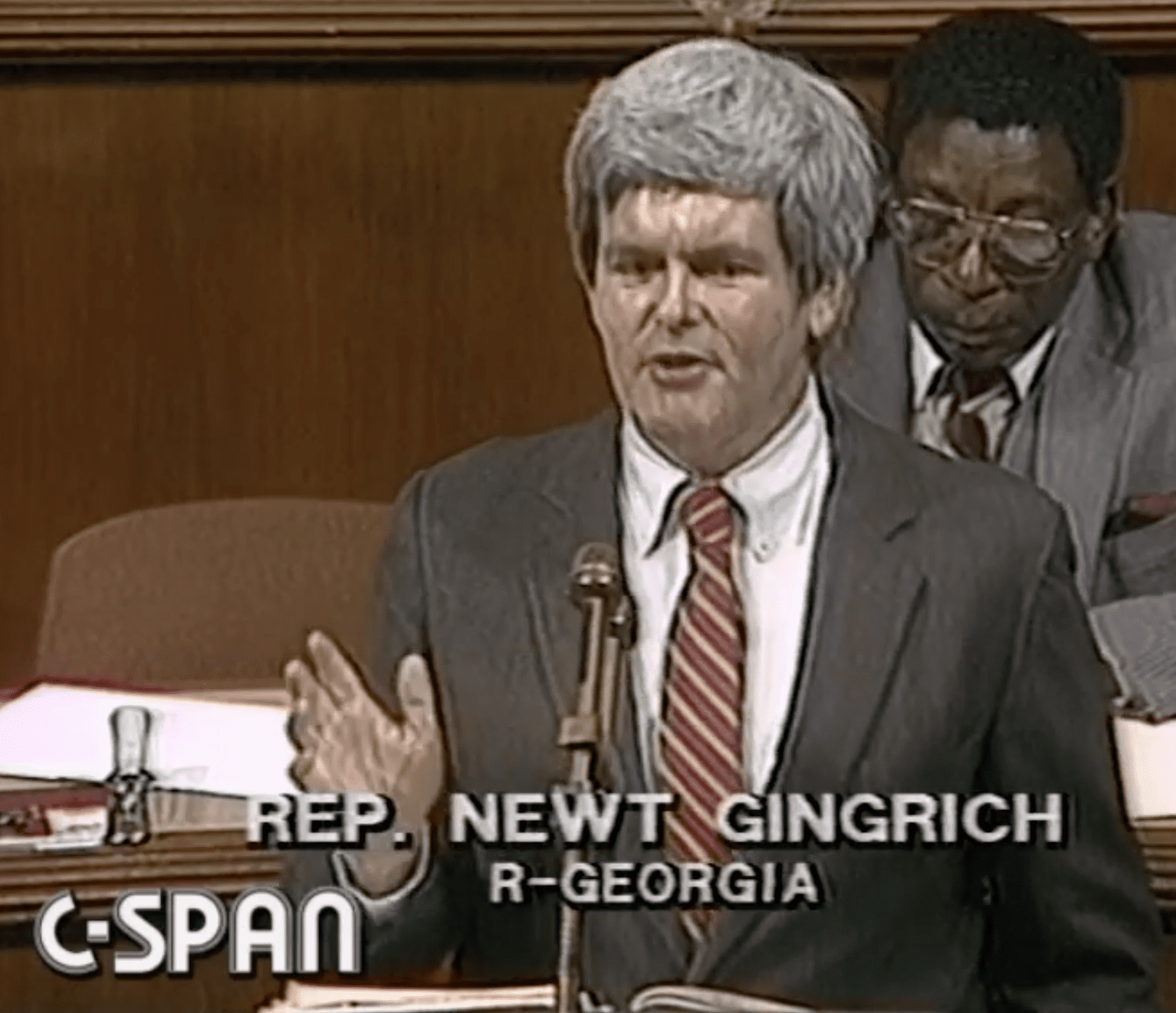
Conflict Politics and Performance Find Traction
Newt Gingrich was still just a junior congressman from Georgia when he began to use C-SPAN’s coverage of Congress to attack Democrats and make headlines in the national media. It set him on the fast track to political power and the Republican Party on a path to controlling the political narrative for the next several decades.
C-SPAN was still a relatively new media platform in 1984 when Gingrich used his time on camera to harangue and harass his Democratic opposition. His performances, which drew House Speaker Tip O’Neil into televised confrontation with him, brought him headlines and put him on the road to political power.
Like Lewis Powell, Gingrich grasped the need for media attention to foster a shift to a more conservative culture. As he explained at the time, “The number one fact about the news media is they love fights.” By creating conflict, Gingrich understood he could capture space in the mainstream media and use that space to reach the public and inflame the GOP base with whatever messages served his ambitions.
Gingrich was a rising star. In a 1984 profile for Mother Jones, David Osborne referenced the Washington Post’s David Broder, “dean of political columnists”, who proclaimed Gingrich to be one of the country’s future leaders, and New Right leader Richard Viguerie, who deemed him to be “the single most important conservative in the House of Representatives”. Osborne, with clear foresight, summed up Gingrich this way: “[Gingrich] has created a disciplined band of Young Turks loyal to his leadership, forged a new conservative ideology for the post-Reagan years, and forced his party’s leaders—long content to go along and get along in a House dominated by Democrats—into a more combative stance.”
Gingrich’s success in front of the C-SPAN cameras led to his appointment as chairman of GOPAC and eventually, to the House speakership.

